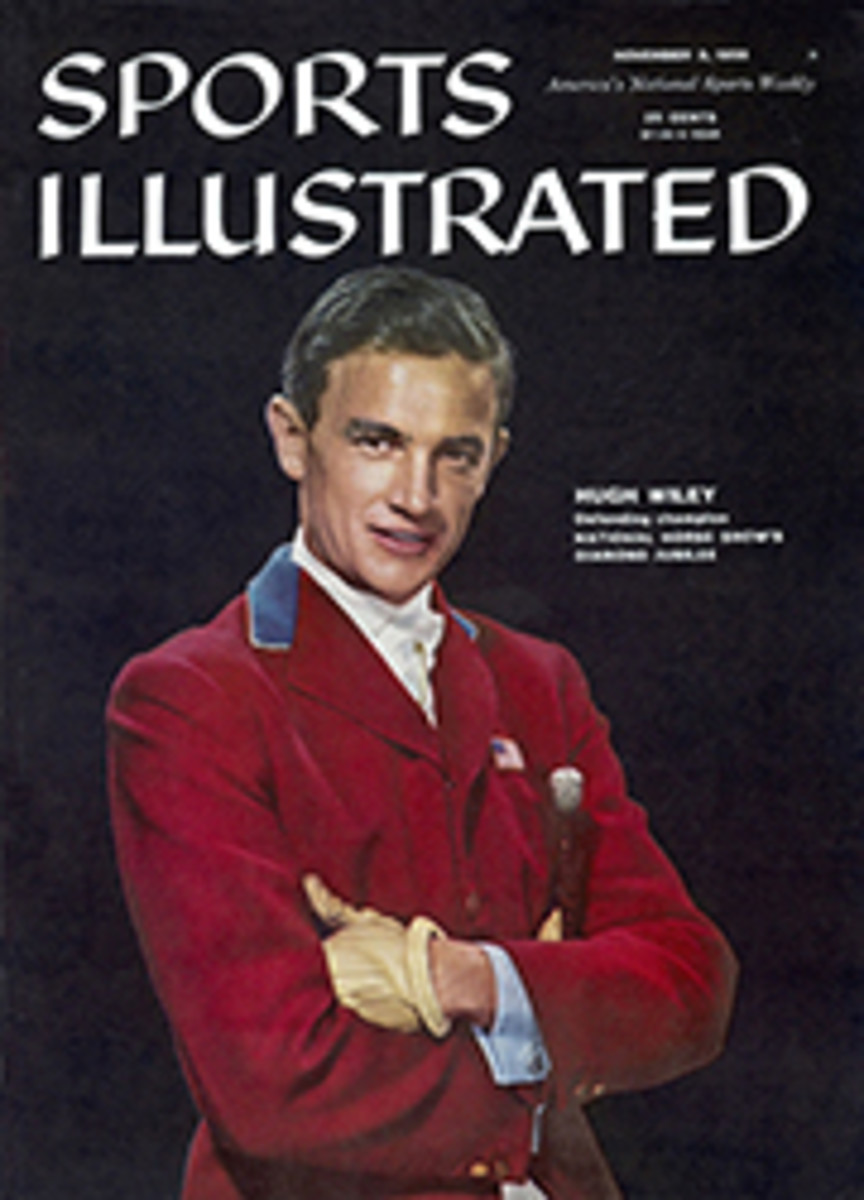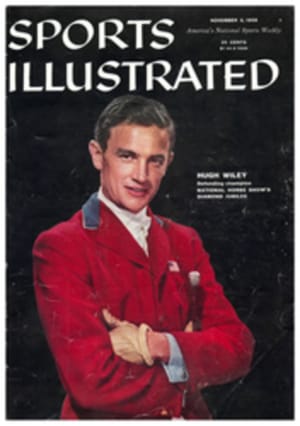
Kookooskoos: Mr. Deadly
Kookooskoos is one of the names given by the Indians to the great horned owl, the most destructive killer of birds, small game and fur-bearing animals to be found in our woods. Countryfolk call him the hoot owl, forgetting that the barred owl is a louder and more frequent hooter. Both are so silent by nature that you may camp for a week or a month in the northern wilderness without hearing a word from them. Then one evening for some unknown reason—possibly an atmospheric change—they shatter the restful silence by a cacophony of whooping, yelling, and idiotic laughter. At such a time I have heard a horned owl bark gruffly like a dog or a barred owl utter a prolonged howl like that of a timber wolf. Such outcries are probably for convivial occasions; at least, by imitating them you can bring the uncanny birds whooping around your campfire.
On other evenings the big owls utter only an occasional hunting cry, which is used apparently to frighten hidden game into betraying sound or motion. The call is a deep, strongly cadenced whoo, hoo-hoo-hooz, whooz, whooz—the same six notes, uttered in half as many seconds on the same pitch but with different pauses, different inflections and a curious buzzing in some of their vowel sounds.
One thing about the hunting call which mystifies me is that it has a hooded quality which makes it impossible to locate by ear alone, as if a ventriloquist were playing his tricks. Only when you see Kookooskoos as he sounds the call can you be sure where he is; and then, to your further bewilderment, he is much nearer than you thought. Does he deceive also the birds, hares and squirrels, making them think he is so far away that they have ample time to escape, when in reality he is near enough to swoop at their first motion?
What may be the right answer is given by Kookooskoos himself whenever he changes his ordinary way of hunting—a stealthy way as we shall presently see—and sends out a penetrating call that warns all wild ears of danger. His perch is usually a tall stump overlooking an opening where small game is more abundant than in the deep woods. Like other owls and hawks, he does not willingly enter brushy cover but waits for the chance to catch his game where he will not bruise his broad wings by swooping. Before sounding the call he sits quiet for a time, so motionless that even to a keen eye his soft-colored body appears to be a part of his watchtower. The moment his challenge rolls over the woods he becomes alive and alert, indicating by his tense attitude that he is ready to strike at anything that stirs below.
Although he sees well by day or night, like his relative the snowy owl, Kookooskoos has the limitation of all natural creatures in associating life with emotion, and so he overlooks even a man who knows how to become a part of the environment by holding still. To my mind his day vision is rather ordinary, not to be compared with that of a goshawk, and his huge wings make him so clumsy of action that seldom does he strike his game at the first swoop. Once on a cold winter day I saw him strike five or six times at a dodging gray squirrel in a leafless tree, and then the squirrel escaped into a knothole.
His hearing, by contrast, is perhaps the most acute to be found in the bird world, and the explanation is easily discovered. His ear openings are enormous, extending halfway around his big head; stretched across them like a gauzy curtain are delicate bristles to catch the faintest vibration of air and carry it to wide-branched filaments of the auditory nerve.
This marvelously sensitive ear might of itself be enough to tell why Kookooskoos tries at odd times to flush his game by a hunting call. Whether he does it intelligently or instinctively no one knows. But observation shows that if no response comes to his challenge he flies on silent wings to a stub overlooking another clearing and there repeats the call, more plainly or more faintly according to the direction of his flight. At the final scene, rarely witnessed by human eyes, all one's sympathy goes out to the innocent or foolish victim. Disturbed by the booming challenge a rabbit stirs a twig underfoot or a bird rustles a leaf, and on the instant Kookooskoos swoops, his terrible claws extended to strike.
Kookooskoos' call is but another of the delicate balances between hunter and hunted which fill the natural world of birds, animals and insects. On one side of the equipoise, nature has given the owl a night-seeing eye and an incredibly sensitive ear; on the other side nature has provided that hunted creatures are practically invisible to wild eyes and wholly inaudible to wild ears so long as they remain quiet. It is the hunting call against a quality of all harmless creatures, namely, their compelling impulse to be still. Such a fair balance between hunter and hunted appears to be as natural as life itself.
Less puzzling to me than the ventriloquism of the hunting call is the way Kookooskoos apparently times it to his purpose or, it may be, to the right atmospheric conditions. I have never heard the sound on a windy or stormy night; never in the cacophony of hooting and gurgling of horned owls in social assembly. To appreciate what I venture to call the timing of Kookooskoos, let's examine first a few of his ordinary hunting habits.
Kookooskoos is a glutton; his feeding is so voracious, and often so unclean, that, to judge by a few examples I have known, no caged owl of his kind ever seems to get enough food to satisfy him. When hungry after long fasting he kills the first small living thing he meets—jay, crow, grouse, rabbit, mink, muskrat, snake, frog, domestic cat—and gobbles every scrap of it. In an hour or two, he disgorges feathers, fur and cracked bones in the shape of dry pellets and is ready to eat again. If absolutely famished, he may tackle even a porcupine; for sometimes a horned owl, thin as a scarecrow, is found with a score of barbed quills stuck in his mouth and throat. In early spring, when skunks come out of their winter dens and all game is scarce in the big woods, almost every horned owl trapped or shot has a skunky odor to tell what he has hunted. At other seasons of plentiful game he may kill a dozen birds or squirrels in succession and eat only the heads and brains, leaving the rest.
Except during a blizzard, when all wild creatures keep to their dens, Kookooskoos hunts practically every night of the year and all night long when greedy owlets must be fed. Naturally you would expect that his hunting call would be sounded constantly after dark, yet days may go by without its being heard. Occasionally, but very rarely, the call is heard on a dark day, which means, I think, that Kookooskoos knows where game is hidden and is trying to scare it into a betraying motion.
During the summer and early fall he often keeps watch by day over a clearing where young partridges come at regular hours to feed or to dust themselves, and at such times he is as silent as the hawk that has an eye on the same toothsome game. Likewise, when Kookooskoos finds a brood of wild ducks he often watches from a hidden perch until they come within striking distance; and here again he is as stealthy as any other hunter, knowing that to alarm the game is to miss his chance.
DINING WITH THE BEAVERS
The close of an August day found me on a stranded log below a salmon pool on the Tobique, waiting for a beaver family that for a week past had been coming regularly to dine on the bark of poplar boughs which I cut fresh for them every morning. The skies were aglow, and the river muted its cheery voice the better to hear a thrush sing evensong.
Into this heavenly quiet rushed a flock of half-grown sheldrakes, as noisy and restless as kingfishers. At one moment they glided smoothly upstream, breasting the stiff current as easily as water sprites; at the next they darted hither and yon as if witch-ridden, crinkling the river's face into foamy wakes, shattering the silence with a croaking of unmelodious voices. Leading the riotous procession was a mother bird, her brown head with its slender beak turning like a weather vane in shifty winds as she kept tabs on her uneasy brood.
Just as these oncoming sheldrakes were opposite me, giving no heed to what they thought a harmless bump on a log, a broad-winged shadow fell upon them, and away they scurried under a smother of upflung spray. The shadow was cast by Kookooskoos, who had all the while been watching the brood from a poplar over my head. At his second try, after clumsily missing the first, he picked up a young bird, killed it by a single grip and carried it limp to the other shore. There on the gravel he tore his game to pieces and swallowed it in wolfish gulps, head, feet, wings and all, leaving only a few loose feathers to tell the night wind of his silent hunting. This time, Kookooskoos had not called at all.
TWO ILLUSTRATIONS
ARTHUR SINGER

